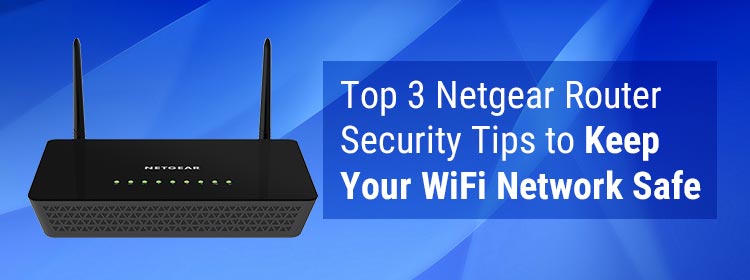
Don’t let your WiFi provide unknown users with a backdoor into your network. Just a few easy Netgear router security tips can help you get the job done. Continue reading.
By virtue of online security, you may be devotedly keeping all your devices as well as applications up-to-date. That’s an outstanding habit but there might be one crucial device you have not checked since you installed it. Yes, we are talking about your Netgear WiFi router – that little device to which you connect your devices for internet access.
Netgear router is an essential component in every connected home but at times, we take it for granted. Given that it broadcasts all data that flows in and out of your home through WiFi – ranging from credit card numbers to emails – the device has long been a target for hijackers. So, what can you do to secure your data? Well, to start, follow the below-mentioned Netgear router security tips to keep your WiFi network and data safe and sound. Read on.
Netgear typically rolls out the newest firmware updates for their routers to address security threats. The simplest way to ensure that your WiFi router always has the latest firmware is to enable the automatic Netgear router firmware update feature.
To do so, open an internet browser and log in to your Netgear wireless router. On the off chance if your router doesn’t support automatic updates, you will need to periodically download and install the new firmware version on your own. And for that, you can take help from our experts. They will guide you thoroughly on how to update your Netgear router firmware manually without any issues.
The latest Netgear router models come with a gamut of handy features that help you handle your WiFi network, but some result in weak spots in your defense system.
So, once you log in to your Netgear WiFi router’s settings page, take a minute to review features that may present opportunities for hijackers. In case you don’t make use of Remote Administration, make sure that it is disabled. This denies access to the control panel of your Netgear router from outside your home network.
Turn off Universal Plug-and-Play (UPnP), which is enabled by default in many routers. Despite the fact that it allows devices on your home WiFi network to connect to each other, it also makes it easier for malware to spread through your network. To turn off the UPnP, log in to the default routerlogin.net web-based setup page, go to the Advanced section, and then make sure that the “Enable UPnP” box is unchecked.
Last but not the least, in case you have a guest network without a password, turn it off. Of course, you don’t want unknown guests to use your network without your consent.
If you have never done so, do it now! You should change two important passwords on your Netgear WiFi router: the one that enables you to manage the device’s settings and the second that allows you to connect other devices to the WiFi network.
Generally, Netgear routers come with default passwords. And sometimes, they are even printed on a sticker on the router itself. The default password is extremely easy to crack for anyone. So, it’s recommended to change your Netgear_ext network password along with the admin login password as soon as you have set up your WiFi router. Keep in mind that the passwords you create are unique, strong, and different from each other.